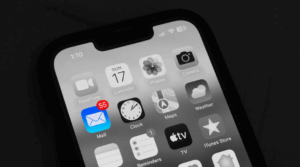The terrible news was announced with great fanfare in a study commissioned by Slack: brace yourselves, email is dead and done.
According to the IT decision makers interviewed by Slack, corporate email is set to disappear within three years and instant messaging will take cover. As luck would have it, this is precisely what Slack is selling!
Gone will be the days of asynchronous messages you can keep and organise in folders. In 2024, you will scroll through your chat history’s endless LOLs and emojis to reassemble your conversations about the year’s most important project and you will easily be able to get in touch with people once you’ve asked them what Slack platform they’re using, how to connect to it and how to contact them there… by email!? Oops, that doesn’t sound right…
This isn’t the first time such a prediction is made – you might remember, back in 2012, Atos’s dramatic announcement and its acquisitions aimed at eradicating corporate email and replacing it by… wait, what was it? – and it comes in the wake of a series of similar more or less realistic announcements over the last couple of decades claiming that email is a thing of the past – over, dead, kaput – always made by bringers of technologies that are “about to replace email”.
What are these prophecies based on? Are they reliable? Who wants the demise of email and why? What’s the situation in the real world?
The suspects
Predictions of the death of email aren’t new. Applications such as WhatsApp were supposed to kill off email. Corporate social networks were supposed to kill off email. Traditional social networks were supposed to kill off email. Instant messaging was (or still is) supposed to kill off email. The Covid vaccine is the only thing that wasn’t supposed to kill off email… only viruses!
Let’s face it, as of today, none of these predictions has materialised. In reality, what can truly challenge the supremacy of email in business communications is face-to-face contact and, to a lesser extent, telephone communications. This is, for example, what Mittel France’s “productivity at work and communication technologies” survey published in IT for Business in late 2019 shows:

It isn’t too farfetched to think that the effect of the current health crisis might put videoconferencing on par with chat/instant messaging, but on a scale still dwarfed by email.
There are no email-free companies, even among Inbox Zero advocates. For a long time Atos, for instance, was a prominent champion of zero email, attracting interest from specialist media. Several articles published at the end of the project (Oettl et al (2018), HBR (2015), etc…) however conclude that this was wishful thinking. While internal email exchanges can be limited by using other solutions, a steady flow of emails continue to come in from outside the company, forcing employees to juggle between tools.
Each new communication technology seems to foreshadow the demise of good old email without it ever coming about. So why does everyone seem to want the death of email?
The motive
Let’s face it, email isn’t blameless. You could even say it has its fair share of faults. Depending on the source you look at, 55% to 95% of email is spam! This is an enormous source of pollution – as we saw in a past article – and the global volume of email increases by about 4.5% every year. Emails also pollute our attention. The constant flow of pointless incoming messages is a productivity killer in the workplace (just like constant chat notifications, in fact…).
And yet, at trial, it emerges that email isn’t the culprit: poor use of it is. Spreading spam, using email as a DMS, multiplying the number of recipients unnecessarily, repeatedly sending large attachments rather that sending them as links via a server as BlueMind allows… That’s what the crime is.
To get 2021 off to a good start, we shared a number of new year email resolutions you can apply to avoid its pitfalls. Training users to good email practice could go a long way in significantly reducing its negative impacts. In any case, one wonders what could, in an email-free world, save whatever new tool replaced it from having similar shortcomings?
We should also note that with more than 4.1 billion accounts worldwide in 2021, email is a magnet for cybercriminals from all walks of life. Business emails are a point of entry into a company’s population and data (contracts, invoices, confidential information, etc.) and therefore are prime targets for ever-more sophisticated cyberattacks.
On the internet like anywhere else, the opportunity makes the thief. It is precisely because it is organisations’ primary communications tools and main point of entry that email comes under attack. It is also because O365 is a market leader that it is a prime target. If email were to disappear, the cyberattacks it carries with it would go down proportionately… and move over to the new player in town: corporate social network, instant messaging, etc. You name it.

The crime scene
Email is so deeply embedded into our professional lives that we sometimes forget the key role it plays, and it’s easier to imagine it going away altogether. But to log into all these applications that herald the demise of email, you will need… access to email. We use it to identify ourselves in every part of our digital life, both personal and professional. Everyone has an email address, but not everyone has a social network account or a chat application which, incidentally, all live in parallel universes.
Cross-platform compatibility does not – and probably will not ever – be included in their roadmap. Direct messaging someone on Twitter does not trigger a Facebook alert or a Slack notification. All, however, send out email notifications.
We also use email as a reminder application. Our inbox is the recipient of events or appointments, recovered passwords, notifications – even from other applications such as instant messaging or social network applications. And email is multi-everything: multi-platform, multi-device, etc. You can read your emails on your desktop in Paris just as well as on your smartwatch while on holidays in Cancun. All you need is an internet connection to have full access to your email.
Your email address is printed on our business card, of course – this piece of information is just as important to your contacts as your name, the name of your company or your phone number. Typing your ID into a social network or a chat or videoconferencing application is all well and good… unless the person you want to contact isn’t a user of that tool or in the same space as yours. Email is universal. It goes beyond platforms and suppliers.
And, the icing on the cake: emails can also have legal value – what is written in an email can be legally binding. This isn’t the case for other applications yet, although this could change.
To announce the death of email presupposes that everything we use it for could become obsolete within a few years to the benefit of other tools that fail to fulfil all its advantages.
The verdict
You might have guessed it, to us at BlueMind, announcing the death of email is akin to announcing that Coke is going to replace water.
What this really is, is an attempt to portray email as “antiquated” in an effort to show a more recent solution under a glowing light, with the promise that it is “innovative” or “disruptive” – i.e. using any possible buzzword to make up for the lack of valid arguments.
This overlooks the key aspects of email, what makes it unique and ubiquitous – a single, universal beacon, compatible with everything everywhere, easy for all, worry free and decentralised (i.e. not subject to a certain will or rules and above all not proprietary to a single organisation).
As a matter of fact, ALL other solutions use email. These are very same solutions that aspire to replace it as a means to send information and notifications.
In short, email is – along with face-to-face communications or the telephone – one of the three universal pillars of communication and by far the number one tool for external communications, and it is growing steadily.
Just like any other general-purpose medium, it lacks structure and should not be used beyond its intended scope. It should (and must) then be complemented by other ad-hoc media and tools to respond to specific needs (live chat, group or topic discussions, knowledge or project management, data sharing, projects, support, etc.).
The issue isn’t about replacing email – this would be aiming at the wrong target – but how to use it properly and interface or complement it with other management tools to meet specific purposes.
You shouldn’t announce the murder of the innocent hand that feeds you, it’s unwise!




